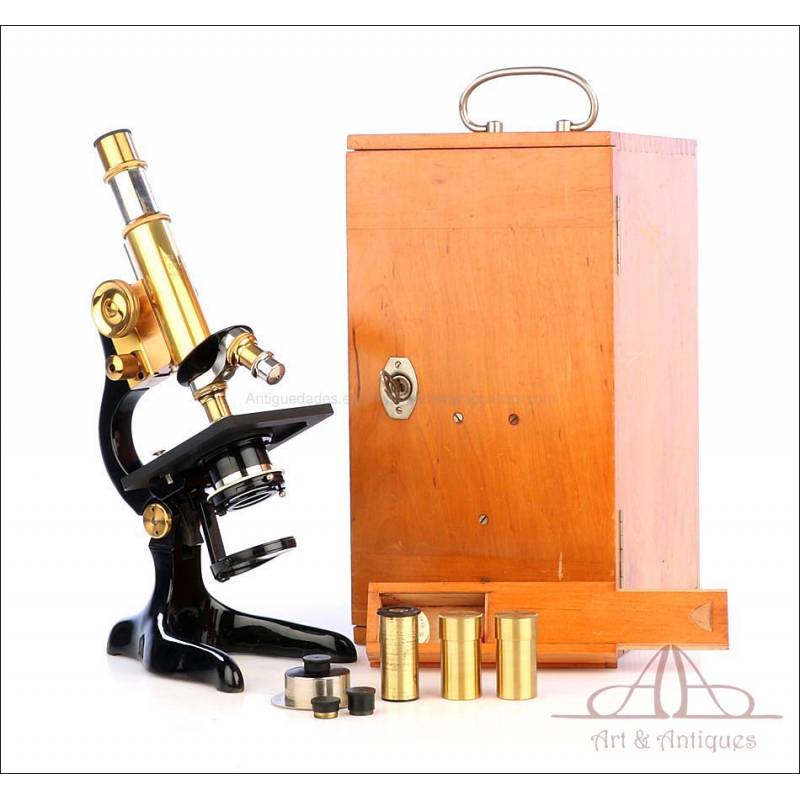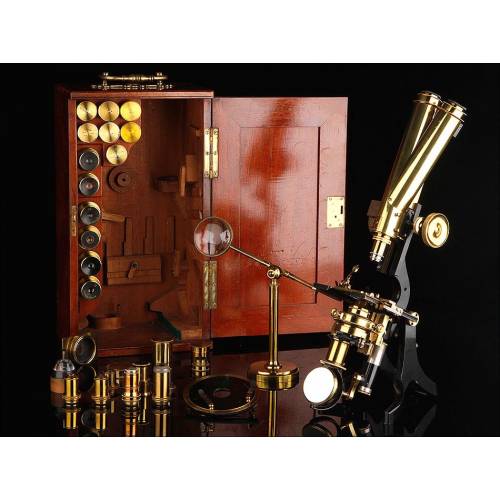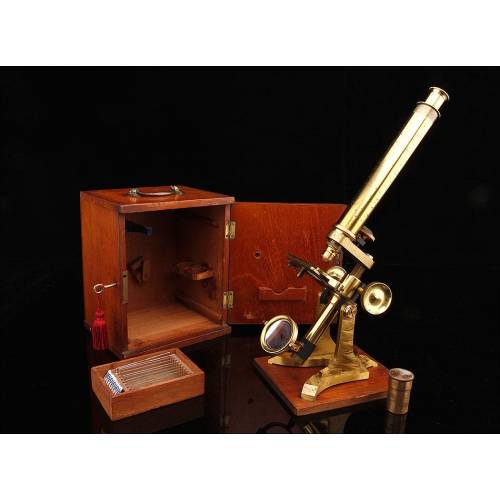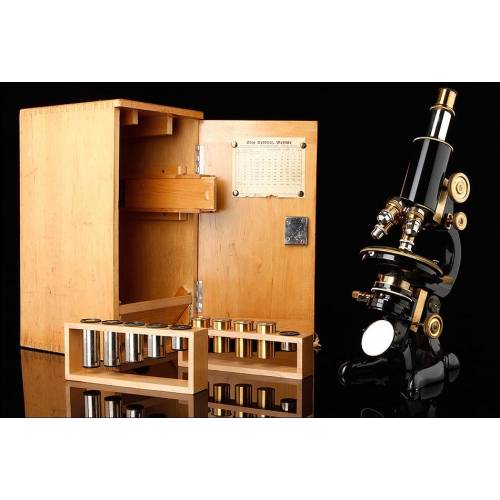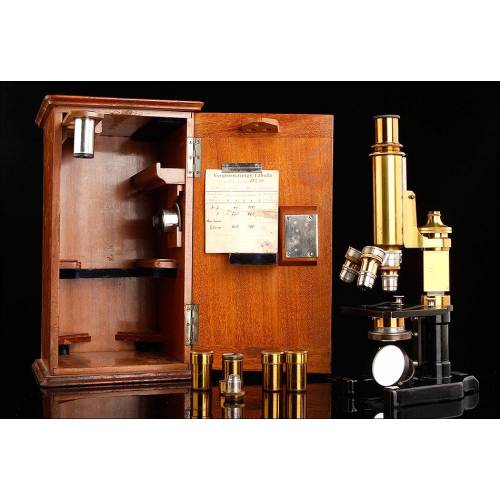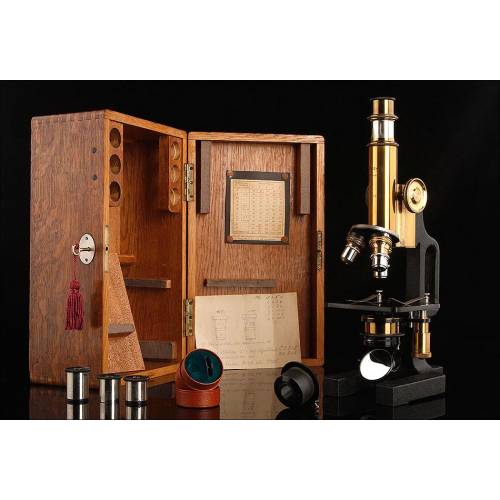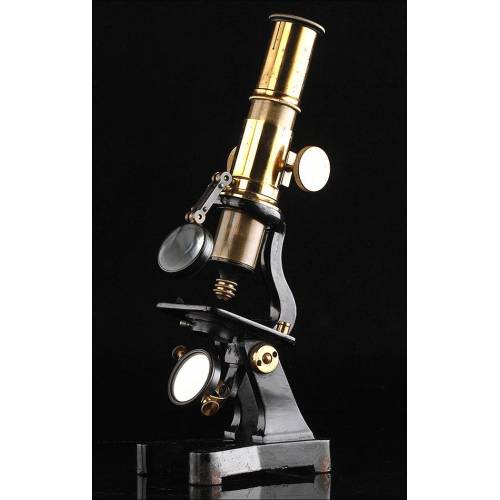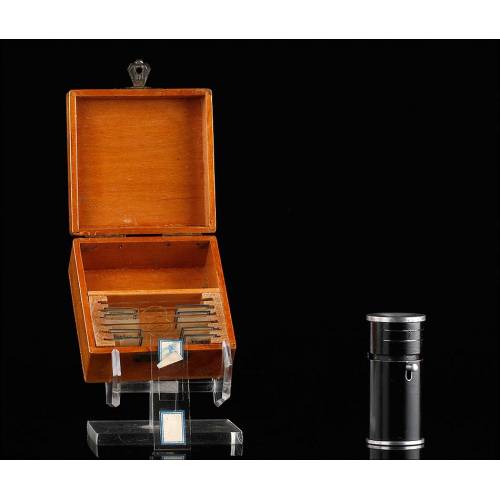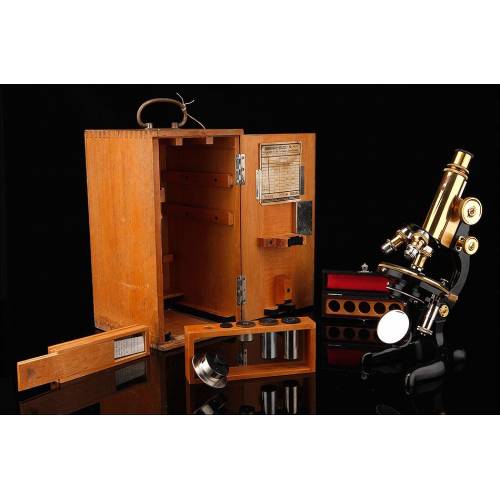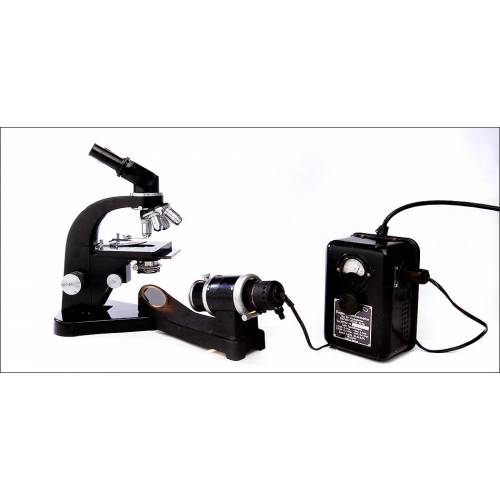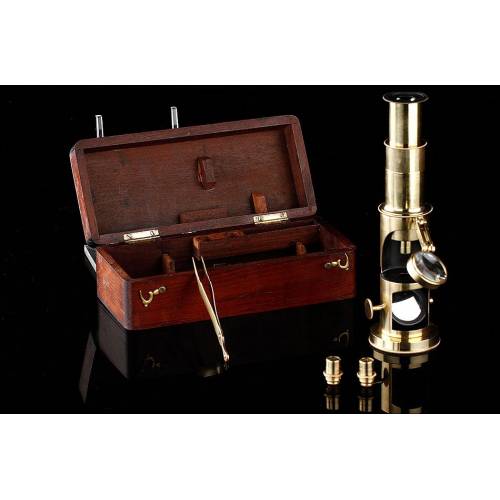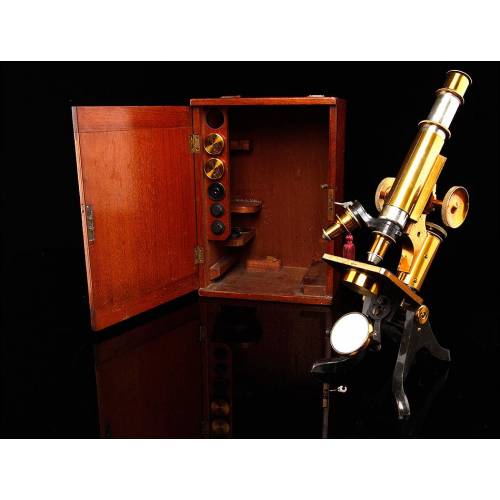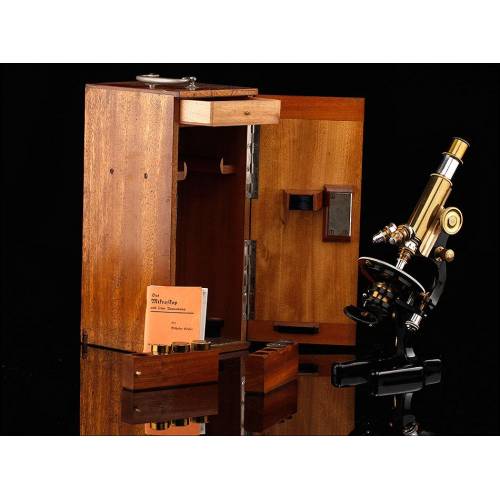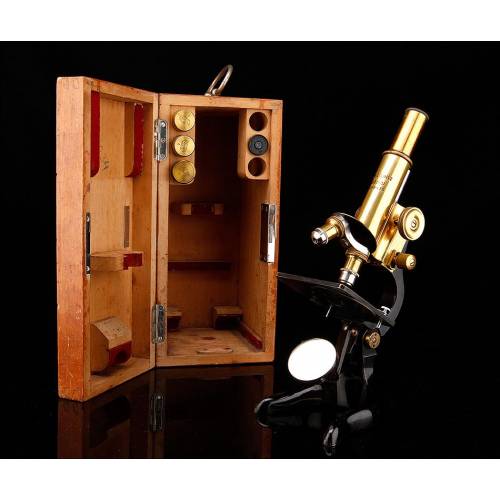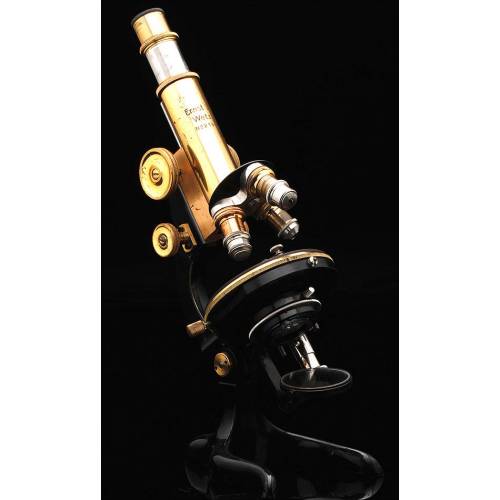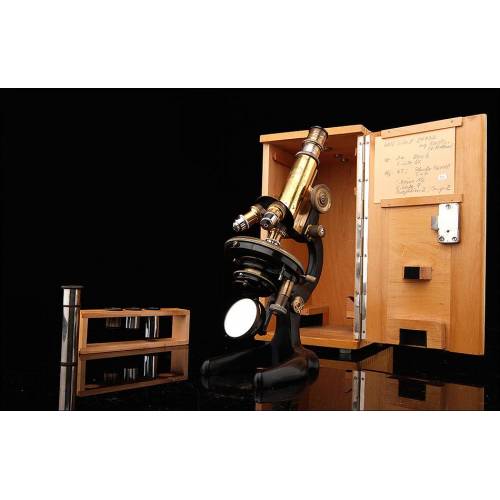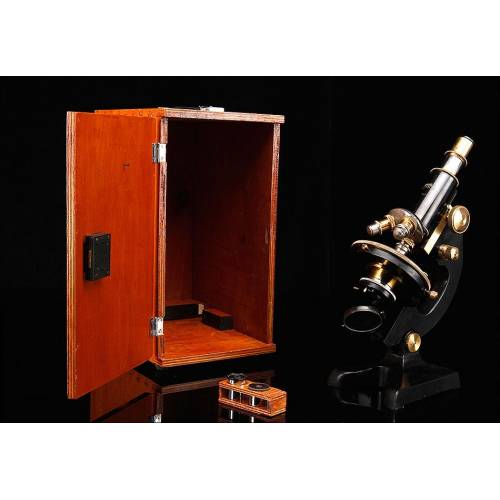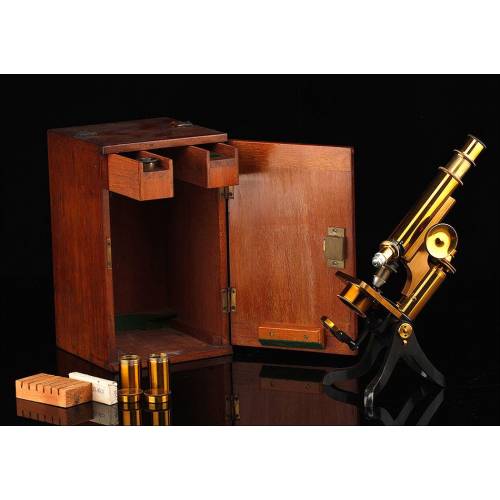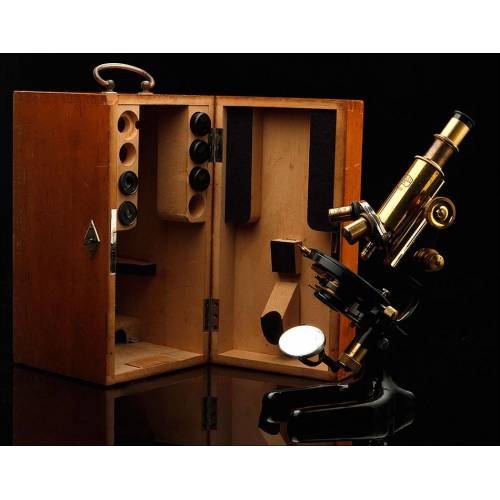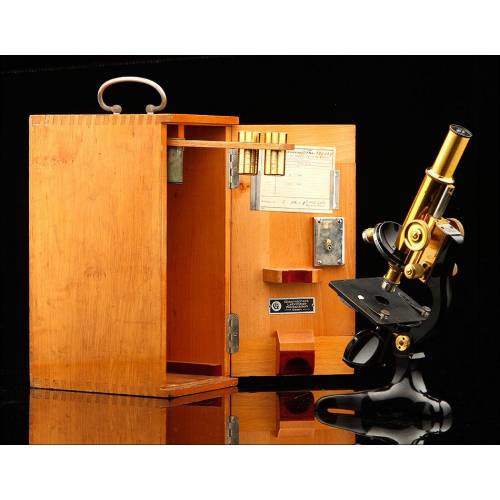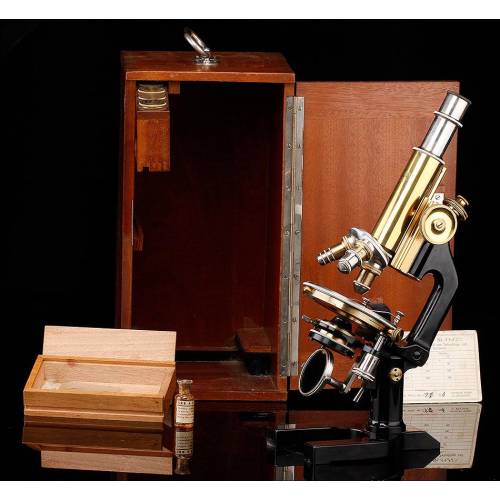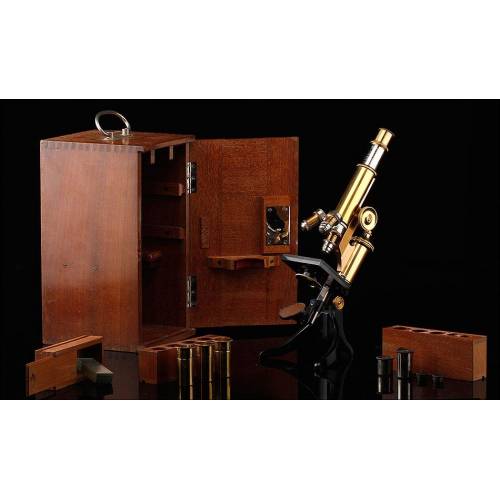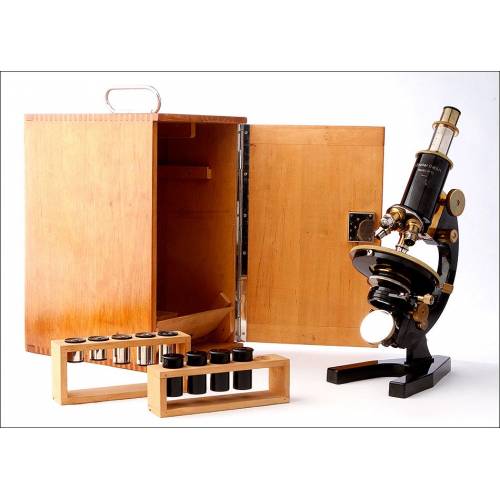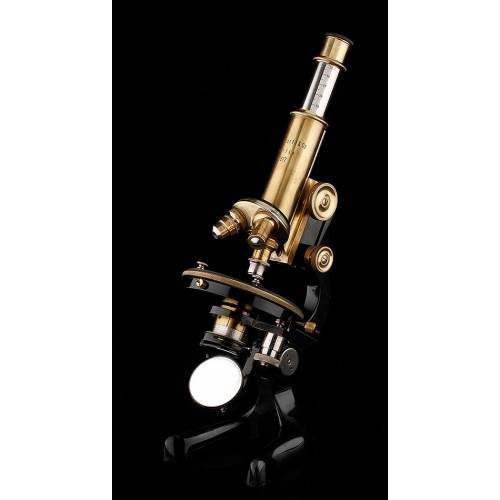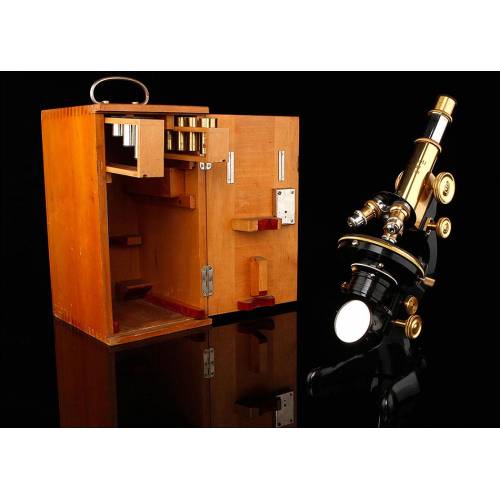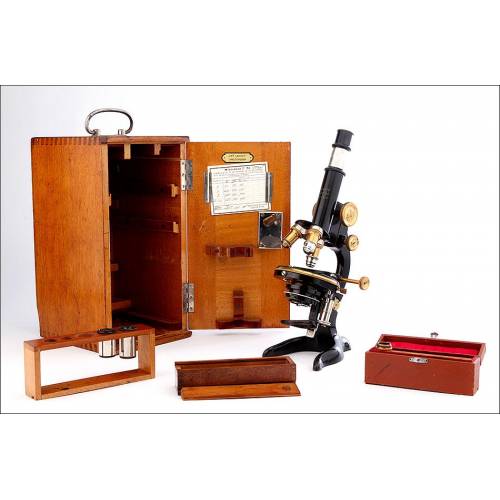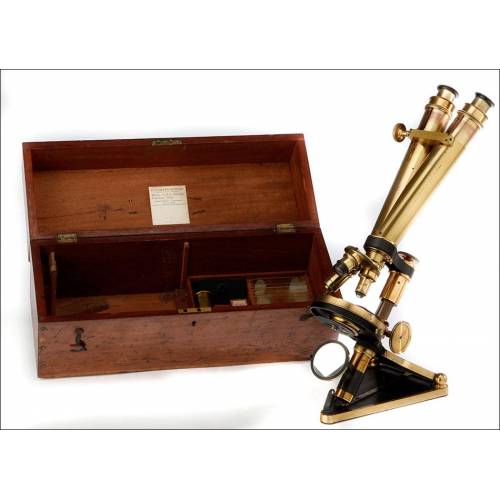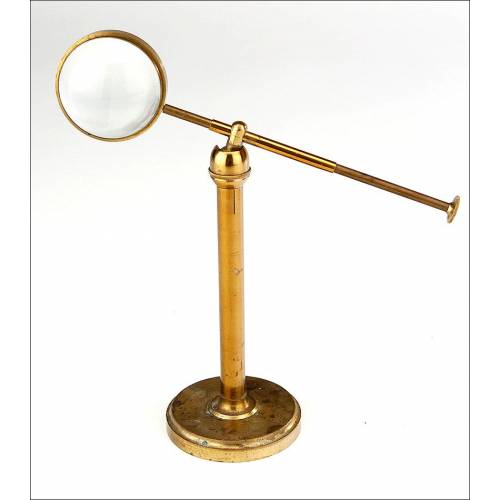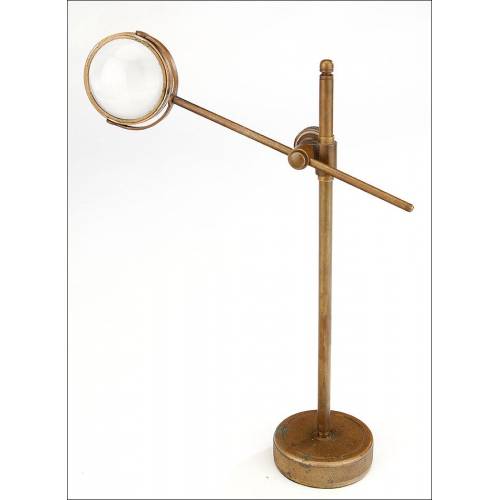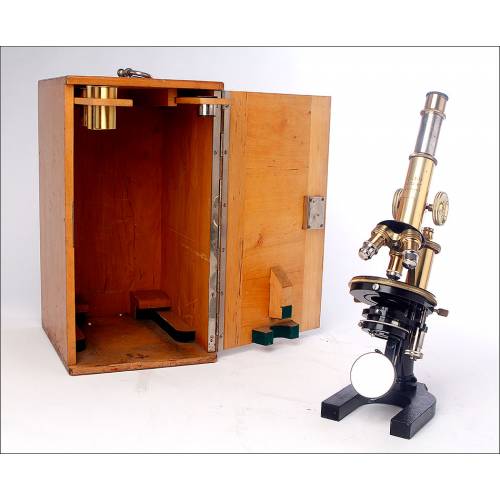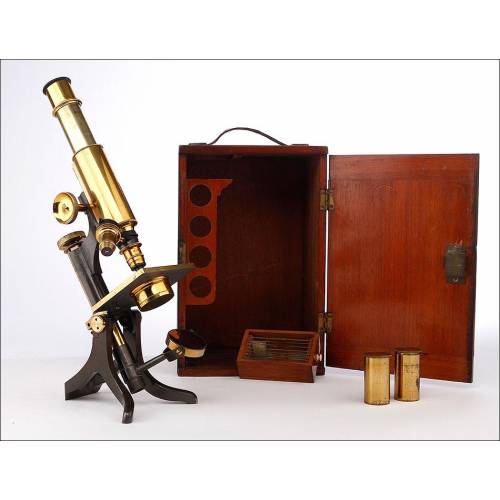D-836
Striking Antique Ernst Leitz Wetzlar Microscope. Germany, 1923
Amazing Ernst Leitz Wetzlar microscope in flawless condition. With a set of 3 objectives and 2 eyepieces. Exclusive item.
Sold!
Striking antique Ernst Leitz Wetzlar microscope made in Germany in 1923, in impeccable condition and excellent working order. The microscope comes in a solid wooden box and is accompanied of a set with 2 objectives and 2 eyepieces, all of them greatly preserved. It mounts a two-lens revolving nosepiece and black-lacquered horseshoe foot, with a beautiful shiny and uniform finish which looks as good as the first day. At the front, the turret bears the engraved manufacturers name Ernst Leitz Wetzlar and the serial number 208733. This same number can be seen in the storing case and written on the identification card, together with information about the device and the lenses. The brass component parts which make up the mechanism are in superb condition, with no traces of rust or wear and protected by the original transparent lacquer. The rack-and-pinion system which makes it possible to move the turret is in perfect working order and moves fluidly, just like the brass screws. Last but not least, the storing case is complete and preserves the original lock-and-key, which is functional. Exceptionally preserved and with a lovely design, this striking antique Ernst Leitz Wetzlar microscope shines with authenticity and charisma. Dimensions: Width: 4.72 in / 12 cm. Height: 6.5 in / 36 cm. Depth: 6.5 in / 16.5 cm.Ernst Leitz Wetzlar History The beginnings of the famous optic material manufacturing company named Ernst Leitz Wetzlar can be found in the first half of the 19th century, when the mechanic and selft-taught mathematician Carl Kellner founded the Carl Kellner Optisches Institut in Wetlzar, Germany. After his early death his widow maintained the business, and in 1864 the mechanical engineer Ernst Leitz entered the company. Just five years later, Leitz took control of the firm and changed its name for Ernst Leitz Wetzlar. Leitz led the company to success after introducing improvements such as serial production, raising sales volume rapidly after 1871. Leitz microscopes included technical improvements that increased their quality; by the late 19th century the company already had a worldwide reputation. Ernst Leitz died in 1920 and the leadership of the firm passed to his son. As well as for their microscopes and optic material, Leitz became hugely famous for their famous Leica cameras (abbreviation of Leitz Camera).

